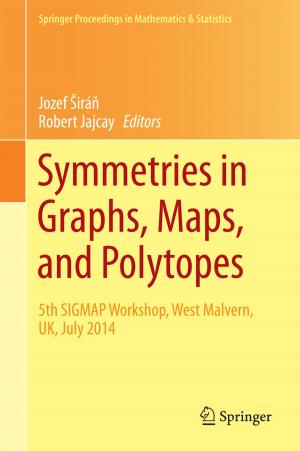| Author: | Michael D. Hirschhorn | ISBN: | 9783319577623 |
| Publisher: | Springer International Publishing | Publication: | August 8, 2017 |
| Imprint: | Springer | Language: | English |
| Author: | Michael D. Hirschhorn |
| ISBN: | 9783319577623 |
| Publisher: | Springer International Publishing |
| Publication: | August 8, 2017 |
| Imprint: | Springer |
| Language: | English |
This unique book explores the world of q, known technically as basic hypergeometric series, and represents the author’s personal and life-long study—inspired by Ramanujan—of aspects of this broad topic. While the level of mathematical sophistication is graduated, the book is designed to appeal to advanced undergraduates as well as researchers in the field. The principal aims are to demonstrate the power of the methods and the beauty of the results. The book contains novel proofs of many results in the theory of partitions and the theory of representations, as well as associated identities. Though not specifically designed as a textbook, parts of it may be presented in course work; it has many suitable exercises.
After an introductory chapter, the power of q-series is demonstrated with proofs of Lagrange’s four-squares theorem and Gauss’s two-squares theorem. Attention then turns to partitions and Ramanujan’s partition congruences. Several proofs of these are given throughout the book. Many chapters are devoted to related and other associated topics. One highlight is a simple proof of an identity of Jacobi with application to string theory. On the way, we come across the Rogers–Ramanujan identities and the Rogers–Ramanujan continued fraction, the famous “forty identities” of Ramanujan, and the representation results of Jacobi, Dirichlet and Lorenz, not to mention many other interesting and beautiful results. We also meet a challenge of D.H. Lehmer to give a formula for the number of partitions of a number into four squares, prove a “mysterious” partition theorem of H. Farkas and prove a conjecture of R.Wm. Gosper “which even Erdős couldn’t do.” The book concludes with a look at Ramanujan’s remarkable tau function.
This unique book explores the world of q, known technically as basic hypergeometric series, and represents the author’s personal and life-long study—inspired by Ramanujan—of aspects of this broad topic. While the level of mathematical sophistication is graduated, the book is designed to appeal to advanced undergraduates as well as researchers in the field. The principal aims are to demonstrate the power of the methods and the beauty of the results. The book contains novel proofs of many results in the theory of partitions and the theory of representations, as well as associated identities. Though not specifically designed as a textbook, parts of it may be presented in course work; it has many suitable exercises.
After an introductory chapter, the power of q-series is demonstrated with proofs of Lagrange’s four-squares theorem and Gauss’s two-squares theorem. Attention then turns to partitions and Ramanujan’s partition congruences. Several proofs of these are given throughout the book. Many chapters are devoted to related and other associated topics. One highlight is a simple proof of an identity of Jacobi with application to string theory. On the way, we come across the Rogers–Ramanujan identities and the Rogers–Ramanujan continued fraction, the famous “forty identities” of Ramanujan, and the representation results of Jacobi, Dirichlet and Lorenz, not to mention many other interesting and beautiful results. We also meet a challenge of D.H. Lehmer to give a formula for the number of partitions of a number into four squares, prove a “mysterious” partition theorem of H. Farkas and prove a conjecture of R.Wm. Gosper “which even Erdős couldn’t do.” The book concludes with a look at Ramanujan’s remarkable tau function.















